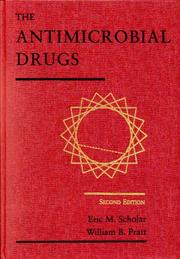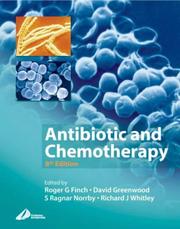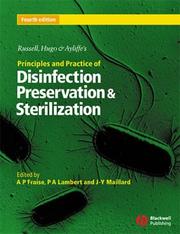| Listing 1 - 10 of 29 | << page >> |
Sort by
|
Book
Year: 2019 Publisher: Washington, DC : Patient-Centered Outcomes Research Institute,
Abstract | Keywords | Export | Availability | Bookmark
 Loading...
Loading...Choose an application
- Reference Manager
- EndNote
- RefWorks (Direct export to RefWorks)
BACKGROUND AND OBJECTIVES: Diabetic peripheral neuropathy (DPN) is a highly prevalent and costly complication of diabetes that is frequently underdiagnosed and undertreated in primary care settings. Our primary research goal was to facilitate automated monitoring of patient-reported symptoms and medication side effects using interactive voice response telephone calls that systematically fed information to providers via patients' electronic health records. We hypothesized that this technology-enabled communication feedback tool would improve patient quality of life by promoting clinically appropriate treatment changes. METHODS: Using a cluster (physician level) randomized controlled trial design, we randomized 1834 primary care physicians to the treatment or control condition (usual care plus brief, noninteractive educational telephone message), screened 2203 patients newly treated for DPN symptoms by these providers and recruited 1270 patients (83% of eligible patients) to participate in the intervention. Our primary outcomes were quality of life (EuroQol 5-dimension questionnaire [EQ-5D]) and select DPN symptoms (ie, pain interference--level of functional interference due to pain, sleep disturbance, and lower extremity functioning), which we assessed via telephone interviews with patients approximately 2 to 4 weeks after they initiated DPN medication and 8 months following baseline assessment. Process outcomes included receipt of a therapeutically effective dose of therapy at 8 and 12 months posttreatment start and patients' assessment of the quality of communication with their provider during the prior 12 months. We used generalized estimating equations to evaluate patient-level changes in the primary outcomes, controlling for clustering of patients within physicians. We conducted sensitivity analyses to assess the robustness of our findings to missing data. RESULTS: Among the 1270 enrolled patients, 1255 (99%) completed the baseline assessment and 1179 (93%) completed follow-up. We found no effect of the intervention on change in quality of life (EQ-5D = −0.002 [95% CI, −0.01 to 0.01], P = .623); symptoms (pain interference = 0.29 [95% CI, −0.75 to 1.34]; P = .579); sleep disruption (0.34 [95% CI, −0.18 to 0.86]; P = .196); lower extremity functioning (−0.08 [95% CI, −1.27 to 1.11]; P = .896); or depressive symptoms (−0.46 [95% CI, −1.24 to 0.32]). We also found no statistically significant changes in either of our process measures: receipt of a therapeutically effective dose (0.13 [95% CI, −0.11 to 0.38]; P = .289) or patient-provider communication (−0.45 [95% CI, −0.97 to 0.07]; P = .091). Intervention effectiveness did not vary by the degree of perceived shared decision-making. More than 70% of patients in the intervention group reported problems with treatment on the first call, most due to side effects. LIMITATIONS: Absence of a protocol for physician response to patient reports, possible inclusion of patients who may have been prescribed study medications for another condition, use of a communication measure that extended into the baseline period, and the short time frame of the study (ie, 8 months) limited our ability to observe gradual changes in medication dosing. CONCLUSIONS: Monitoring of patient-reported symptoms and side effects through automated telephone calls did not significantly improve quality of life, symptoms, dosing, or patient-provider communication among patients newly treated for DPN symptoms. Given the high rates of side effects related to DPN medications reported, automated monitoring may have reinforced more conservative dosing strategies among providers in an attempt to limit treatment-related harms. To be effective in the management of DPN symptoms, automated monitoring may first require accurate identification of those patients most likely to benefit from, or be harmed by, available medications.
Book
Year: 2019 Publisher: Washington, DC : Patient-Centered Outcomes Research Institute,
Abstract | Keywords | Export | Availability | Bookmark
 Loading...
Loading...Choose an application
- Reference Manager
- EndNote
- RefWorks (Direct export to RefWorks)
BACKGROUND AND OBJECTIVES: Diabetic peripheral neuropathy (DPN) is a highly prevalent and costly complication of diabetes that is frequently underdiagnosed and undertreated in primary care settings. Our primary research goal was to facilitate automated monitoring of patient-reported symptoms and medication side effects using interactive voice response telephone calls that systematically fed information to providers via patients' electronic health records. We hypothesized that this technology-enabled communication feedback tool would improve patient quality of life by promoting clinically appropriate treatment changes. METHODS: Using a cluster (physician level) randomized controlled trial design, we randomized 1834 primary care physicians to the treatment or control condition (usual care plus brief, noninteractive educational telephone message), screened 2203 patients newly treated for DPN symptoms by these providers and recruited 1270 patients (83% of eligible patients) to participate in the intervention. Our primary outcomes were quality of life (EuroQol 5-dimension questionnaire [EQ-5D]) and select DPN symptoms (ie, pain interference--level of functional interference due to pain, sleep disturbance, and lower extremity functioning), which we assessed via telephone interviews with patients approximately 2 to 4 weeks after they initiated DPN medication and 8 months following baseline assessment. Process outcomes included receipt of a therapeutically effective dose of therapy at 8 and 12 months posttreatment start and patients' assessment of the quality of communication with their provider during the prior 12 months. We used generalized estimating equations to evaluate patient-level changes in the primary outcomes, controlling for clustering of patients within physicians. We conducted sensitivity analyses to assess the robustness of our findings to missing data. RESULTS: Among the 1270 enrolled patients, 1255 (99%) completed the baseline assessment and 1179 (93%) completed follow-up. We found no effect of the intervention on change in quality of life (EQ-5D = −0.002 [95% CI, −0.01 to 0.01], P = .623); symptoms (pain interference = 0.29 [95% CI, −0.75 to 1.34]; P = .579); sleep disruption (0.34 [95% CI, −0.18 to 0.86]; P = .196); lower extremity functioning (−0.08 [95% CI, −1.27 to 1.11]; P = .896); or depressive symptoms (−0.46 [95% CI, −1.24 to 0.32]). We also found no statistically significant changes in either of our process measures: receipt of a therapeutically effective dose (0.13 [95% CI, −0.11 to 0.38]; P = .289) or patient-provider communication (−0.45 [95% CI, −0.97 to 0.07]; P = .091). Intervention effectiveness did not vary by the degree of perceived shared decision-making. More than 70% of patients in the intervention group reported problems with treatment on the first call, most due to side effects. LIMITATIONS: Absence of a protocol for physician response to patient reports, possible inclusion of patients who may have been prescribed study medications for another condition, use of a communication measure that extended into the baseline period, and the short time frame of the study (ie, 8 months) limited our ability to observe gradual changes in medication dosing. CONCLUSIONS: Monitoring of patient-reported symptoms and side effects through automated telephone calls did not significantly improve quality of life, symptoms, dosing, or patient-provider communication among patients newly treated for DPN symptoms. Given the high rates of side effects related to DPN medications reported, automated monitoring may have reinforced more conservative dosing strategies among providers in an attempt to limit treatment-related harms. To be effective in the management of DPN symptoms, automated monitoring may first require accurate identification of those patients most likely to benefit from, or be harmed by, available medications.

ISBN: 128083093X 0199759715 9780199759712 0195125282 9780195125283 0195125290 9780195125290 9780195340235 019534023X Year: 2010 Publisher: Oxford New York Oxford University Press in cooperation with the American Academy of Ophthalmology
Abstract | Keywords | Export | Availability | Bookmark
 Loading...
Loading...Choose an application
- Reference Manager
- EndNote
- RefWorks (Direct export to RefWorks)
Communicable Diseases --- Anti-Infective Agents. --- Anti-Microbial Agents --- Antiinfective Agents --- Antimicrobial Agents --- Anti-Infective Agent --- Anti-Microbial Agent --- Antimicrobial Agent --- Microbicide --- Microbicides --- Agent, Anti-Infective --- Agent, Anti-Microbial --- Agent, Antimicrobial --- Agents, Anti-Infective --- Agents, Anti-Microbial --- Agents, Antiinfective --- Agents, Antimicrobial --- Anti Infective Agent --- Anti Infective Agents --- Anti Microbial Agent --- Anti Microbial Agents --- Infections --- Parasites --- drug therapy. --- Anti-infective agents. --- Communicable diseases --- Chemotherapy.
Book
ISBN: 9780199671328 019967132X 0191841927 9780191503108 019150310X 019105920X 9780191059209 Year: 2017 Publisher: Oxford ; New York : Oxford University Press,
Abstract | Keywords | Export | Availability | Bookmark
 Loading...
Loading...Choose an application
- Reference Manager
- EndNote
- RefWorks (Direct export to RefWorks)
Fully reviewed and revised for its second edition, the Oxford Handbook of Infectious Diseases and Microbiology maintains its position as the must-have guide to all aspects of infectious diseases and microbiology. Reflecting the current approach to joint postgraduate training programmes, the handbook takes an integrated approach to both subjects. It covers the basic principles of bacteriology and virology, along with specific guidance on individual diseases and conditions, all in the accessible Oxford Handbook style. Now including new topics on important subjects such as microbiology specimen collection, commonly used media, molecular diagnostics, and antimicrobials in pregnancy, as well as incorporating new guidelines from WHO, NICE, and BASHH among others, this handbook ensures that the informaiton you need is accessible, clear, and easy-to-understand. Practical and comprehensive, this handbook includes coverage of National Frameworks and current legislation, together with information on topical issues such as bioterrorism and preventative medicine. Fully reviewed by specialist senior readers, and with useful links to up-to-date clinical information and online resources, this is an important addition to the Oxford Handbook Series.
Communicable diseases --- Microbiology --- Handbooks, manuals, etc. --- Communicable Diseases --- Communicable Disease Control --- Anti-Infective Agents --- microbiology --- methods --- E-books --- Anti-Microbial Agents --- Antiinfective Agents --- Antimicrobial Agents --- Anti-Infective Agent --- Anti-Microbial Agent --- Antimicrobial Agent --- Microbicide --- Microbicides --- Agent, Anti-Infective --- Agent, Anti-Microbial --- Agent, Antimicrobial --- Agents, Anti-Infective --- Agents, Anti-Microbial --- Agents, Antiinfective --- Agents, Antimicrobial --- Anti Infective Agent --- Anti Infective Agents --- Anti Microbial Agent --- Anti Microbial Agents --- Infections --- Parasites
Book
ISBN: 9780128036686 0128036680 9780128036426 0128036427 Year: 2016 Publisher: Amsterdam, Netherlands : Academic Press,
Abstract | Keywords | Export | Availability | Bookmark
 Loading...
Loading...Choose an application
- Reference Manager
- EndNote
- RefWorks (Direct export to RefWorks)
"Antibiotic Resistance: Mechanisms and New Antimicrobial Approaches discusses up-to-date knowledge in mechanisms of antibiotic resistance and all recent advances in fighting microbial resistance such as the applications of nanotechnology, plant products, bacteriophages, marine products, algae, insect-derived products, and other alternative methods that can be applied to fight bacterial infections. Understanding fundamental mechanisms of antibiotic resistance is a key step in the discovery of effective methods to cope with resistance. This book also discusses methods used to fight antibiotic-resistant infection based on a deep understanding of the mechanisms involved in the development of the resistance".
Drug Resistance --- Natural immunity. --- Anti-Infective Agents. --- immunology. --- Anti-Microbial Agents --- Antiinfective Agents --- Antimicrobial Agents --- Anti-Infective Agent --- Anti-Microbial Agent --- Antimicrobial Agent --- Microbicide --- Microbicides --- Agent, Anti-Infective --- Agent, Anti-Microbial --- Agent, Antimicrobial --- Agents, Anti-Infective --- Agents, Anti-Microbial --- Agents, Antiinfective --- Agents, Antimicrobial --- Anti Infective Agent --- Anti Infective Agents --- Anti Microbial Agent --- Anti Microbial Agents --- Infections --- Parasites --- Disease resistance --- Host resistance --- Innate immunity --- Innate resistance --- Native immunity --- Natural resistance --- Nonspecific immunity --- Resistance to disease --- Immunity
Periodical
Abstract | Keywords | Export | Availability | Bookmark
 Loading...
Loading...Choose an application
- Reference Manager
- EndNote
- RefWorks (Direct export to RefWorks)
Medical microbiology, virology, parasitology --- Anti-Infective Agents --- Antifungal Agents --- Antiprotozoal Agents --- Anti-infective agents --- Antiinfectieux --- Periodicals --- Périodiques --- Microbiology. --- Anti-Infective Agents. --- Antifungal Agents. --- Antiprotozoal Agents. --- Schizonticides --- Agents, Antiprotozoal --- Parasites --- Protozoan Infections --- Antibiotics, Antifungal --- Therapeutic Fungicides --- Fungicides, Therapeutic --- Agents, Antifungal --- Antifungal Antibiotics --- Fungi --- Mycoses --- Infectious Disease Medicine --- Anti-infective agents. --- Health Sciences --- General and Others --- Pharmacy and Pharmacology --- Anti-Microbial Agents --- Antiinfective Agents --- Antimicrobial Agents --- Microbicides --- Agents, Anti-Infective --- Agents, Anti-Microbial --- Agents, Antiinfective --- Agents, Antimicrobial --- Anti Infective Agents --- Anti Microbial Agents --- Infection --- Infections --- Antifungal Agent --- Agent, Antifungal --- Anti-Infective Agent --- Anti-Microbial Agent --- Antimicrobial Agent --- Microbicide --- Agent, Anti-Infective --- Agent, Anti-Microbial --- Agent, Antimicrobial --- Anti Infective Agent --- Anti Microbial Agent --- Microbiology

ISBN: 0443071292 9780443071294 Year: 2003 Publisher: Edinburgh: Churchill Livingstone,
Abstract | Keywords | Export | Availability | Bookmark
 Loading...
Loading...Choose an application
- Reference Manager
- EndNote
- RefWorks (Direct export to RefWorks)
Infection --- Anti-Bacterial Agents --- Antibiotics --- Chemotherapy --- drug therapy --- therapeutic use --- Anti-Infective Agents. --- Drug Therapy. --- Therapy, Drug --- Pharmacotherapy --- Chemotherapies --- Drug Therapies --- Pharmacotherapies --- Therapies, Drug --- Disease --- Pharmaceutical Preparations --- Pharmacologic Actions --- Anti-Infective Agents --- Drug Therapy --- Anti-Microbial Agents --- Antiinfective Agents --- Antimicrobial Agents --- Microbicides --- Agents, Anti-Infective --- Agents, Anti-Microbial --- Agents, Antiinfective --- Agents, Antimicrobial --- Anti Infective Agents --- Anti Microbial Agents --- Parasites --- Drug therapy --- Therapeutics --- Drugs --- Pharmacology --- Anti-infective agents --- Microbial metabolites --- Allelopathic agents --- Antibiosis --- Pharmaceutical microbiology --- Phytoncides --- Infections --- Anti-Infective Agent --- Anti-Microbial Agent --- Antimicrobial Agent --- Microbicide --- Agent, Anti-Infective --- Agent, Anti-Microbial --- Agent, Antimicrobial --- Anti Infective Agent --- Anti Microbial Agent --- Infection - drug therapy --- Anti-Bacterial Agents - therapeutic use
Periodical
Abstract | Keywords | Export | Availability | Bookmark
 Loading...
Loading...Choose an application
- Reference Manager
- EndNote
- RefWorks (Direct export to RefWorks)
Probiotics --- Anti-infective agents --- Probiotics. --- Anti-Infective Agents. --- Probiòtics --- Medicaments antiinfecciosos --- Anti-infective agents. --- Revistes. --- Probiotic supplements --- Antiinfective agents --- Antimicrobial agents --- Antimicrobial drugs --- Antimicrobials --- Anti-Microbial Agents --- Antiinfective Agents --- Antimicrobial Agents --- Microbicides --- Agents, Anti-Infective --- Agents, Anti-Microbial --- Agents, Antiinfective --- Agents, Antimicrobial --- Anti Infective Agents --- Anti Microbial Agents --- Probiotic --- Dietary supplements --- Microorganisms --- Gastrointestinal system --- Drugs --- Infection --- Parasites --- Pediococcus pentosaceus --- Prebiotics --- Microbiology --- Anti-Infective Agents --- Infections --- Anti-Infective Agent --- Anti-Microbial Agent --- Antimicrobial Agent --- Microbicide --- Agent, Anti-Infective --- Agent, Anti-Microbial --- Agent, Antimicrobial --- Anti Infective Agent --- Anti Microbial Agent --- Probiòtics. --- Medicaments antiinfecciosos.

ISBN: 1405101997 Year: 2004 Publisher: Malden (Mass.) : Blackwell,
Abstract | Keywords | Export | Availability | Bookmark
 Loading...
Loading...Choose an application
- Reference Manager
- EndNote
- RefWorks (Direct export to RefWorks)
Preservatives, Pharmaceutical. --- Anti-Infective Agents. --- Sterilization --- Disinfection --- Pharmaceutic Preservative --- Pharmaceutic Preservatives --- Pharmaceutical Preservative --- Pharmaceutical Preservatives --- Preservative, Pharmaceutic --- Preservative, Pharmaceutical --- Preservatives, Pharmaceutic --- Pharmaceutic Aids (Preservatives) --- methods. --- Disinfection and disinfectants --- Preservation of materials --- Anti-Infective Agents --- Preservatives, Pharmaceutical --- Anti-Microbial Agents --- Antiinfective Agents --- Antimicrobial Agents --- Microbicides --- Agents, Anti-Infective --- Agents, Anti-Microbial --- Agents, Antiinfective --- Agents, Antimicrobial --- Anti Infective Agents --- Anti Microbial Agents --- Infection --- Parasites --- Bacteriology --- Contamination (Technology) --- Surgery, Aseptic and antiseptic --- Collection and preservation --- Materials --- Disinfectants --- Germicides --- Sanitation --- Fumigation --- methods --- Technique --- Preservation --- Infections --- Anti-Infective Agent --- Anti-Microbial Agent --- Antimicrobial Agent --- Microbicide --- Agent, Anti-Infective --- Agent, Anti-Microbial --- Agent, Antimicrobial --- Anti Infective Agent --- Anti Microbial Agent
Periodical
Abstract | Keywords | Export | Availability | Bookmark
 Loading...
Loading...Choose an application
- Reference Manager
- EndNote
- RefWorks (Direct export to RefWorks)
Anti-infective agents --- Antiinfectieux --- Anti-infective agents. --- Anti-Infective Agents. --- Antifungal Agents. --- Antiprotozoal Agents. --- Antifungal Agents --- Antiprotozoal Agents --- Schizonticides --- Agents, Antiprotozoal --- Antibiotics, Antifungal --- Therapeutic Fungicides --- Fungicides, Therapeutic --- Agents, Antifungal --- Antifungal Antibiotics --- Antiinfective agents --- Antimicrobial agents --- Antimicrobial drugs --- Antimicrobials --- Anti-Infective Agents --- Parasites --- Protozoan Infections --- Fungi --- Mycoses --- Drugs --- Antifungal Agent --- Agent, Antifungal --- Anti-Microbial Agents --- Antiinfective Agents --- Antimicrobial Agents --- Anti-Infective Agent --- Anti-Microbial Agent --- Antimicrobial Agent --- Microbicide --- Microbicides --- Agent, Anti-Infective --- Agent, Anti-Microbial --- Agent, Antimicrobial --- Agents, Anti-Infective --- Agents, Anti-Microbial --- Agents, Antiinfective --- Agents, Antimicrobial --- Anti Infective Agent --- Anti Infective Agents --- Anti Microbial Agent --- Anti Microbial Agents --- Infections --- Antiprotozoal agents. --- Antiprotozoaires. --- Antiprotozoals --- Antiprotozoan agents --- Antiprotozoans --- Antiparasitic agents
| Listing 1 - 10 of 29 | << page >> |
Sort by
|

 Search
Search Feedback
Feedback About UniCat
About UniCat  Help
Help News
News